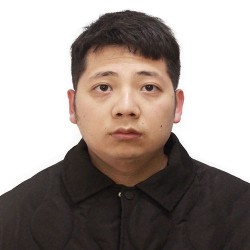
Haosen Yang
Academic and research departments
Surrey Institute for People-Centred Artificial Intelligence (PAI), Centre for Vision, Speech and Signal Processing (CVSSP).About
My research project
Visual Representation learningThe primary objective of my research is to investigate effective system to understand real world in a mutually beneficial and interpretable manner. By combining the strengths of both video, laugauage and audio, I aim to enhance their individual performances and foster a collaborative learning process.
The primary objective of my research is to investigate effective system to understand real world in a mutually beneficial and interpretable manner. By combining the strengths of both video, laugauage and audio, I aim to enhance their individual performances and foster a collaborative learning process.
Publications
Masked autoencoders (MAEs) have emerged recently as art self-supervised spatiotemporal representation learners. Inheriting from the image counterparts, however, existing video MAEs still focus largely on static appearance learning whilst are limited in learning dynamic temporal information hence less effective for video downstream tasks. To resolve this drawback, in this work we present a motion-aware variant -- MotionMAE. Apart from learning to reconstruct individual masked patches of video frames, our model is designed to additionally predict the corresponding motion structure information over time. This motion information is available at the temporal difference of nearby frames. As a result, our model can extract effectively both static appearance and dynamic motion spontaneously, leading to superior spatiotemporal representation learning capability. Extensive experiments show that our MotionMAE outperforms significantly both supervised learning baseline and state-of-the-art MAE alternatives, under both domain-specific and domain-generic pretraining-then-finetuning settings. In particular, when using ViT-B as the backbone our MotionMAE surpasses the prior art model by a margin of 1.2% on Something-Something V2 and 3.2% on UCF101 in domain-specific pretraining setting. Encouragingly, it also surpasses the competing MAEs by a large margin of over 3% on the challenging video object segmentation task. The code is available at this https URL.
Understanding the semantics of individual regions or patches of unconstrained images, such as open-world object detection, remains a critical yet challenging task in computer vision. Building on the success of powerful image-level vision-language (ViL) foundation models like CLIP, recent efforts have sought to harness their capabilities by either training a contrastive model from scratch with an extensive collection of region-label pairs or aligning the outputs of a detection model with image-level representations of region proposals. Despite notable progress, these approaches are plagued by computationally intensive training requirements, susceptibility to data noise, and deficiency in contextual information. To address these limitations, we explore the synergistic potential of off-the-shelf foundation models, leveraging their respective strengths in localization and semantics. We introduce a novel, generic, and efficient architecture, named RegionSpot, designed to integrate position-aware localization knowledge from a localization foundation model (e.g., SAM) with semantic information from a ViL model (e.g., CLIP). To fully exploit pretrained knowledge while minimizing training overhead, we keep both foundation models frozen, focusing optimization efforts solely on a lightweight attention-based knowledge integration module. Extensive experiments in open-world object recognition show that our RegionSpot achieves significant performance gain over prior alternatives, along with substantial computational savings (e.g., training our model with 3 million data in a single day using 8 V100 GPUs). RegionSpot outperforms GLIP-L by 2.9 in mAP on LVIS val set, with an even larger margin of 13.1 AP for more challenging and rare categories, and a 2.5 AP increase on ODinW. Furthermore, it exceeds GroundingDINO-L by 11.0 AP for rare categories on the LVIS minival set.
Audio-Visual Segmentation (AVS) aims to precisely outline audible objects in a visual scene at the pixel level. Existing AVS methods require fine-grained annotations of audio-mask pairs in supervised learning fashion. This limits their scalability since it is time consuming and tedious to acquire such cross-modality pixel level labels. To overcome this obstacle, in this work we introduce unsupervised audio-visual segmentation with no need for task-specific data annotations and model training. For tackling this newly proposed problem, we formulate a novel Cross-Modality Semantic Filtering (CMSF) approach to accurately associate the underlying audio-mask pairs by leveraging the off-the-shelf multi-modal foundation models (e.g., detection [1], open-world segmentation [2] and multi-modal alignment [3]). Guiding the proposal generation by either audio or visual cues, we design two training-free variants: AT-GDINO-SAM and OWOD-BIND. Extensive experiments on the AVS-Bench dataset show that our unsupervised approach can perform well in comparison to prior art supervised counterparts across complex scenarios with multiple auditory objects. Particularly, in situations where existing supervised AVS methods struggle with overlapping foreground objects, our models still excel in accurately segmenting overlapped auditory objects. Our code will be publicly released.
Additional publications
- Temporal action proposal generation with background constraint
- Temporal action proposal generation with transformers
- MIFNet: Multiple Instances Focused Temporal Action Proposal Generation
- Nsnet: Non-saliency suppression sampler for efficient video recognition
- Self-supervised Video Representation Learning with Motion-Aware Masked Autoencoder